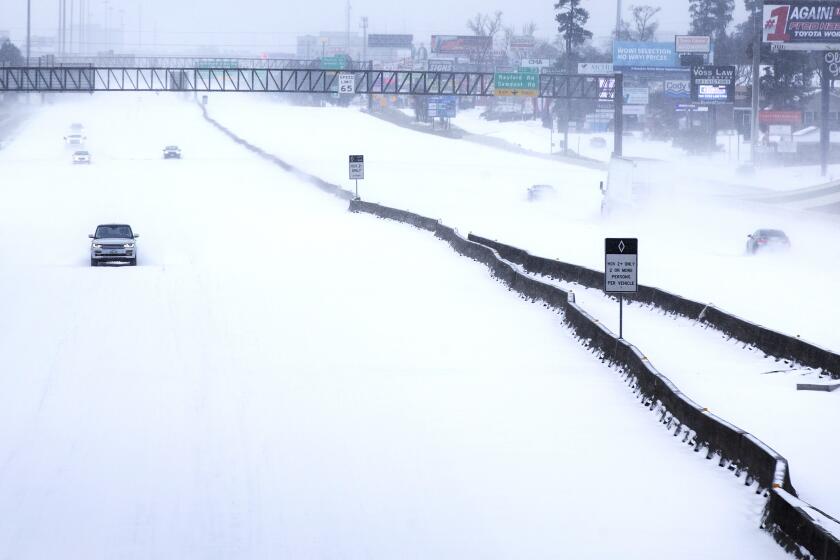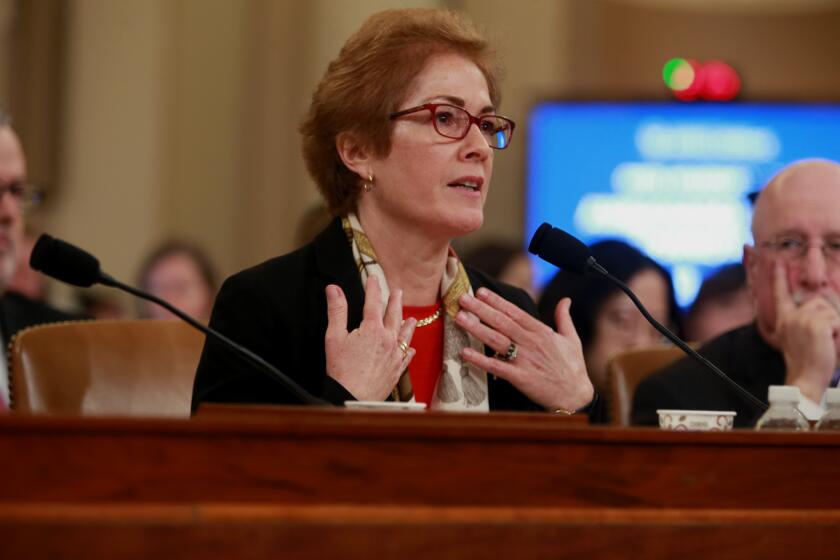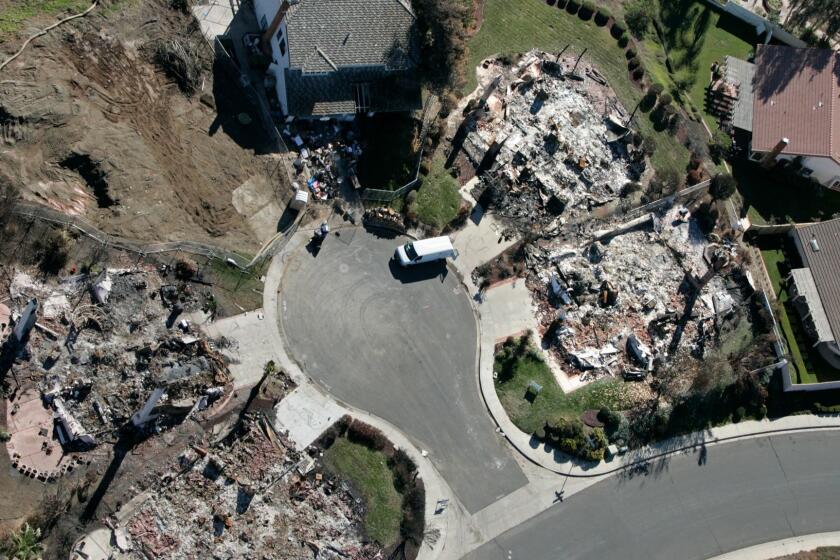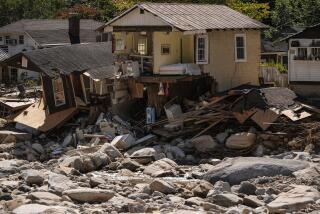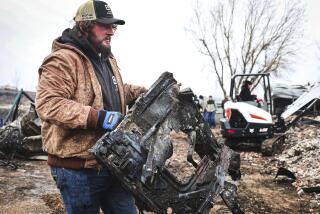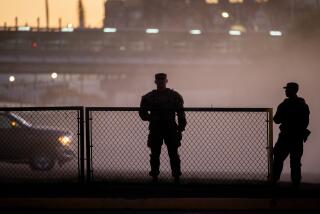Column: The Texas crisis reminds us that ânaturalâ disasters are almost always manmade
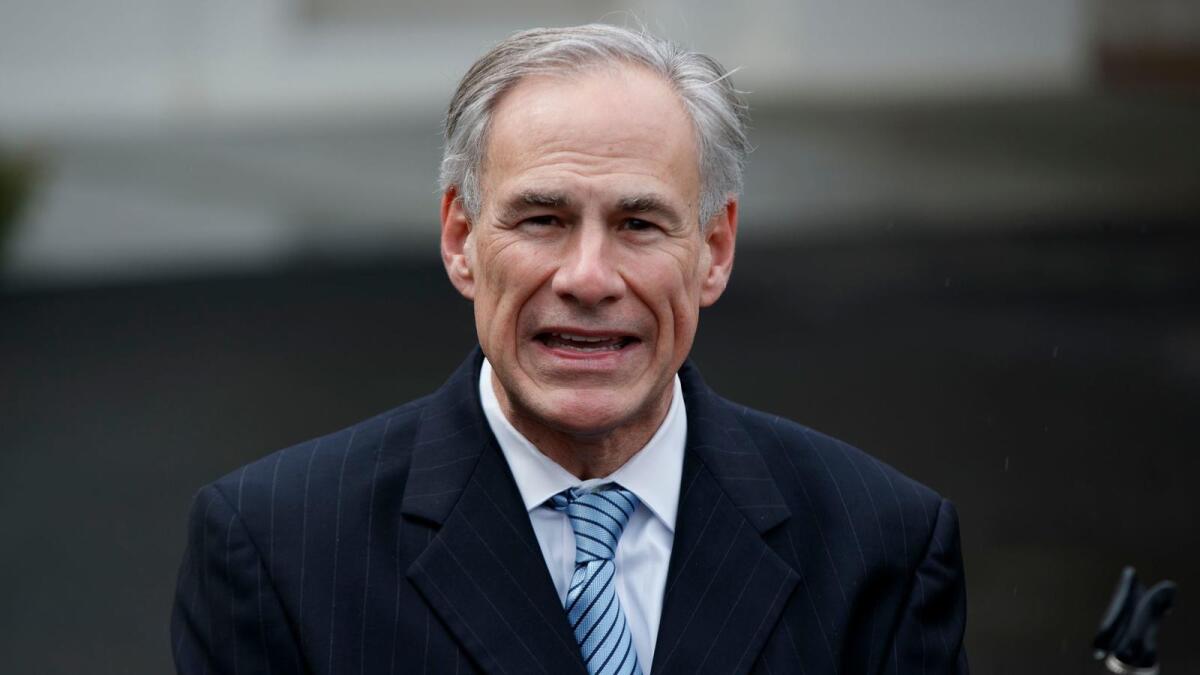
Mother Nature certainly has been coming in for a heaping share of damnation in recent months.
As if the pandemic wasnât enough, there were the wildfires in California and the deep freeze in Texas. Hundreds of thousands have lost their lives, and property damages run into the billions.
The prospect of more of the same or worse bulks large on the horizon. Starvation, civil unrest and political disorder seem to be all that nature bequeaths us.
Cold weather failures were technology-agnostic.
— Krane et al, Rice University
Yet sheâs getting a bad rap. The truth is that while nature sets the stage for disasters, theyâre almost all manmade.
The human habit of blaming nature for our own failures isnât new. Itâs a common theme in explanations of famines, for example, which are customarily attributed to droughts or crop failures. Those factors are generally present in famines, but they donât cause famines by themselves. Famine, as relief experts understand, is manmade.
âDrought doesnât kill people, politics does,â William Garvelink, a disaster specialist involved in Somalia relief for the U.S. Agency for International Development (AID), told me in 1992, during a famine in Somalia.
Famine can be created by misguided government policies that restrict the movement of food or disturb traditional practices.
In Ethiopia in the 1980s, Mengistu Haile Mariamâs regime required that all agricultural surplus be turned over to the state for sale â at fixed prices. Farmers were denounced as hoarders just for following the traditional practice of storing grain.
Transporting grain across provincial lines was illegal; Mengistu showed his disdain for the countryâs agricultural traders â the middlemen who kept the grain flowing â by having many of them shot as speculators.
Texas politicians mocked California for its energy crisis and natural disasters, but now 4 million Texans are without power.
When drought struck the countryâs north in 1983, there was little available farm surplus and no way to move it from thriving regions to dry ones. The result, the epic famine of 1984-85, was popularly attributed to a lack of food; in truth, it was a manmade failure of markets.
Resistance by the Reagan administration to providing food aid to Mengistuâs Marxist regime, on the inaccurate claim that he was diverting it from needy populations, also contributed to the disaster.
The COVID-19 pandemic demands the same truth-telling. At a fundamental level, it was caused by the leap of an infectious virus from the animal kingdom to humans. But its relentless spread was enabled by worldwide political failures.
These included a lack of pandemic preparedness throughout the developed world as well as the systematic disinvestment in public health awareness and programs.
The U.S. government under then-President Trump also engaged in the relentless politicization of countermeasures aimed at corralling the transmission of the virus and an absence of national planning to distribute tests, protective equipment and vaccines.
These were all human failures; the virus was all too happy to exploit them, at the cost of 500,000 deaths in the U.S. and nearly 2.5 million globally.
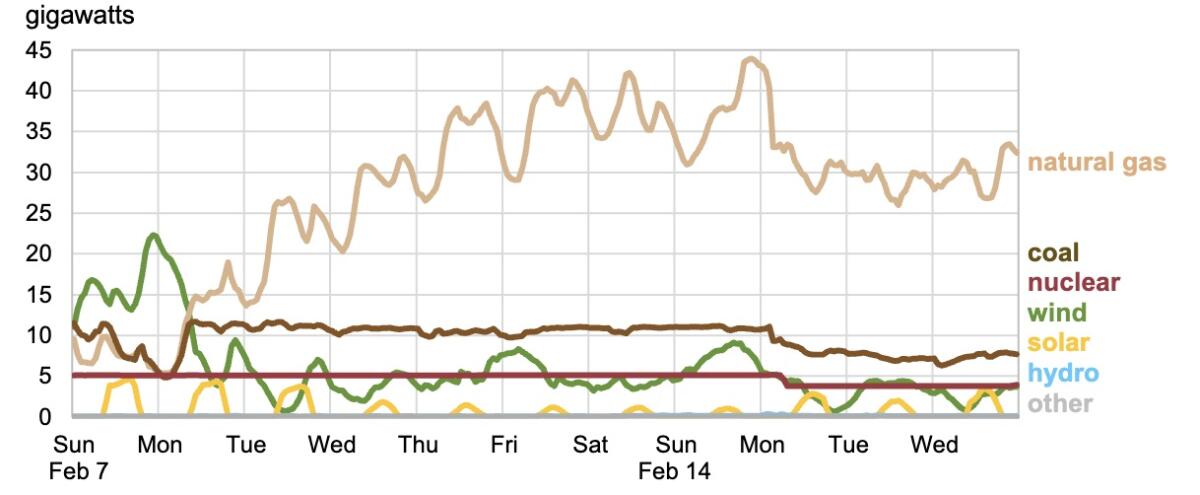
The toll of the California wildfires could be ascribed to climate change, which can be seen as a natural phenomenon â albeit one that is fundamentally the result of human activity.
The extent to which the ferocious freeze in Texas can be blamed on climate change is unclear. Even if we assume itâs a product of natural weather cycles, it was human decision-making that made it so much worse.
As weâve reported, the collapse of that stateâs electrical grid earlier this month was the harvest of two Texas-proud policies. The first was resistance to federal regulation. Put simply, the state decided back in 1935 to create a power grid entirely disconnected from any other state so that the federal government â which has authority over interstate, not intrastate, commerce â couldnât mess with Texas.
The goal was to position the state as a âbastion of impregnable isolation,â as an observer of the process remarked in the 1990s.
The second policy was to deregulate electricity even at the state level. Despite the example of Californiaâs misadventure with electricity deregulation, which created the state energy crisis in 2000-01, Texas deregulated its energy market in 2002. The state allowed residents to contract for power with any retail provider opting into the deregulated market.
The state thereby deliberately deprived itself of any authority to require electricity generators or distributors to ensure that their systems could withstand the elements.
Regulators in most states have the ability to mandate that participants in their power grids harden their systems against extreme events and provide for adequate backup supplies if portions of the grids go down; the incentive to comply is generally that the grid members can charge their expenses to ratepayers.
Trump blamed the disaster of Somalia on Marie Yovanovitch. He couldnât have been more off-base.
That doesnât happen in Texas. As Julia A. Cohn of the University of Houston wrote last week, the Texas system allows power generators simply to raise their prices when supplies fall short. Generators ârarely have extra money to set aside for investment in backup capacity or new generation,â she observed â and no enforceable mandate to make any such investment.
Layered onto those factors was the misguided optimism that nothing like the recent winter blast could have reached Texas. The Electric Reliability Council of Texas, or ERCOT, which oversees the grid in about 90% of the state, maintains the lowest reserve margin of any operator in the country, a mere 18% of capacity over estimated peak demand.
(The highest reserves are maintained by the grid covering Pennsylvania, New Jersey and Maryland and another grid covering the central U.S. from Kansas to North Dakota, at about 28% each.)
The complacency stretched from gas well owners to power plant operators. âWith [natural] gas prices being low â and storage being full â the risk of 2-3 days of possible freeze-off every several years is a risk that Gulf Coast producers have been willing to take,â ERCOT reported in 2013. âIt is a tradeoff between lost revenue from lost production vs. lost revenue from higher operating costs needed to freeze-protect individual wells.â
When the cold wave struck in mid-February, these gambles came together to create catastrophe. The Texas grid was especially vulnerable to frozen pipes, valves and other equipment, it had little generating capacity to spare, and it couldnât summon supplies from other states to cover its shortfall.
These were manifestly human failings, but that didnât keep Texas political leaders from trying to distract residents from the truth.
They described the freezing vortex as unexpected, unpredictable, even unimaginable. But not only was it none of those things, it was only a somewhat more severe manifestation of events that had happened in Texas five times this century alone, most recently and seriously in 2011.
According to a report by the Federal Energy Regulatory Commission after that event, 210 ERCOT generating facilities failed during a four-day deep freeze that February, shutting off power to 3.2 million customers.
FERC urged that Texas institute a major program of winterization backed up with legislation, if necessary. Texas energy facilities had been designed to withstand extreme high temperatures, which are common in the summer months, but not the opposite. The recommendation went unheeded.
Political leaders including Gov. Greg Abbott also tried to blame the stateâs renewable energy providers, even suggesting that the Texas disaster showed the hazards of the progressive Green New Deal, which prioritizes solar and wind generation over oil, coal and gas.
Itâs true that Texas gets the highest percentage of electricity in the country from wind turbines, many of which froze or iced up. But virtually every mode of generation failed during the cold storm. And because natural gas-fueled power plants still provide half the stateâs electricity, their failure was the most catastrophic for residents.
In the realm of adding insult to injury, one could hardly do better than San Diego Gas & Electric Co.
âCold weather failures were technology-agnostic,â a team of analysts led by Jim Krane of Rice University wrote. Winterizing the electric grid isnât a technical challenge â itâs done routinely in parts of the country that face harsh winters every year. Itâs a financial challenge, which Texas utilities havenât been inclined to meet as long as theyâre not forced to.
Itâs tempting to blame Texas âexceptionalismâ for the deadly disaster, but of course the state isnât alone in turning a blind eye to the consequences of faulty policy and resistance to regulation.
California experiences wildfires every year, and although climate change is evidently making the fire season longer and more violent, the state has been cavalier about allowing residential development to encroach fire-prone wildlands and about riding herd on utilities to make sure theyâre maintaining their equipment to ensure they donât spark fires.
Regulators and residents have repeatedly warned Pacific Gas & Electric Co. about the fire hazards resulting from its lack of maintenance, including trimming vegetation around power lines and other equipment.
Last year, the company pleaded guilty to 84 felony manslaughter counts related to the 2018 Camp fire, up to then the most devastating wildfire in state history.
Yet California is still inviting disaster. The state has the largest number of houses in the so-called wildland-urban interface, with 4.46 million homes â nearly 33% of all its housing â in the potential fire zone.
When the next wildfires erupt, as they will, theyâll be blamed on Mother Nature, when human nature is at fault.
When humans will take notice of these realities is anyoneâs guess, but the way to bet is that many more lessons will be needed.
The frozen wind turbines of Texas were âa freakish event,â former Texas governor and U.S. Energy Secretary Rick Perry said last week in a post on the website of House Minority Leader Kevin McCarthy (R-Bakersfield).
Perry once again spoke up for the Texas principle of independence from federal oversight, ignoring how much its vaunted independence had just cost in lives and destruction.
âTexans would be without power for longer than three days to keep the federal government out of their business,â Perry said. But that, of course, would be human nature, not Mother Nature, at work.
More to Read
Inside the business of entertainment
The Wide Shot brings you news, analysis and insights on everything from streaming wars to production â and what it all means for the future.
You may occasionally receive promotional content from the Los Angeles Times.
